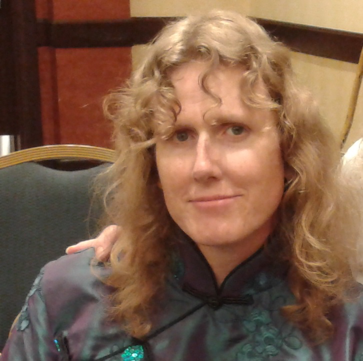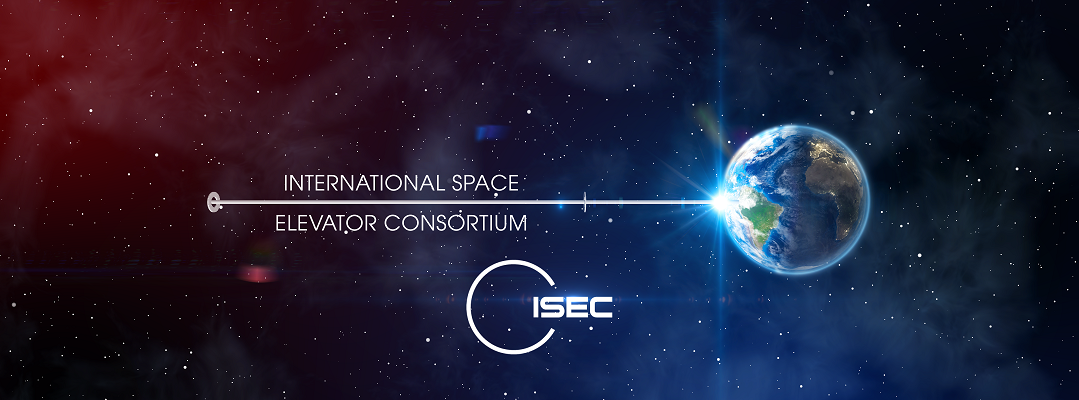|
| |
Welcome to the November, 2017 edition of the
ISEC Newsletter!

In this edition, you will find a preview of the latest ISEC
Architect Note from Fitzer, an update from the Space Elevator Simulator Study,
and information about the space debris problem.
We also have another write-up from one of our summer Interns. There are
also some exciting upcoming Space Elevator related events around the world that
you will want to check out. Thank you
for reading and lending your support in the development of Space Elevators!
As always, you will find notices of
several open volunteer positions (a great way to help this project, even if
you’re not a scientist or engineer) and a reminder that all
ISEC reports, Yearly Reports, CLIMB Journals and the Via Ad Astra Magazine, are
now available FOR FREE in electronic (pdf) format at ISEC.org.
There is plenty of work to be done!
If you want to help us make a space
elevator happen, JOIN
ISEC and get involved! A space elevator
would truly revolutionize life on earth and open up the solar system and beyond
to all of us.
Please
don’t forget to LIKE US on Facebook, FOLLOW US on Twitter and
enjoy the photos and videos that we’ve posted on Flickr and YouTube – all under our Social
Identity of ISECdotORG.
Thank you,
Mark
Dodrill
President's Corner

How
bad is the space debris problem?
In 2011, ISEC
produced Space Elevator Survivability – Space Debris Mitigation [pdf for free
at www.isec.org] with the conclusion that space debris was
NOT a showstopper. With the proper
approach by the space elevator development office, it is a manageable
engineering problem. The question in
2017 is: will it still be the same
answer after the newly announced constellations of wide-band Internet
satellites reach Low Earth Orbit? There
is a remarkable movement inside the commercial space world to launch
constellations of communications satellites to include: Starlink: 4,425 + 7500 later – One Web: 720
at LEO + 1280 at MEO – Boeing: 2956 in LEO – Samsung: 4,600 – Telesat: 290 –
Theia Holding: 112. Assuming that their
second stages deorbit according to mitigation plans, total new LEO satellites
would be 13,103. If we were to do the
same calculations we did in 2010, we would have to have a database of tracked
satellites in excess of 15,370 [old data] + 13,103 or 28,473 total
objects. [Two assumptions here: 1) we
are better at deorbiting rocket stages, and 2) some cleaning will occurr during
the interim years]. This essentially
doubles the numbers we predicted before.
As the calculations were linear, just doubling the results works as an
estimate of the problem. The probability
of collision between tracked objects and the space elevator will now be:
-
For an average LEO stretch of 60 kms
of tether, once every 9 years
-
For the total LEO stretch [200-2000
km], PC is 7 times per year.
Remember, this is
for a conjunction of tracked debris/spacecraft/rockets, with a stationary
tether. When one tosses in the ability
to move the tether out of the way of tracked debris [only 7 times per year],
the odds are definitely in our favor. It
once again becomes an engineering and operations problem that is
achievable.
However, this short
discussion is also a call for help from the space community. We must have the ability to track smaller
debris, track the larger ones more rapidly and with more accuracy, and share
that data rapidly and routinely. In
addition, there are many policies/laws that should be implemented before we
become operational to improve this situation.
Many of the recommendations in our study report are still valid and lead
to the conclusion that the space community should: initiate a deorbit program for all large
space debris currently in LEO while ensuring that future satellites, such as
the new 13,103 communications satellites, are designed for debris mitigation and
deorbit [within a reasonable time – not 25 years].
Keep climbing!
Pete Swan
President,
ISEC
Athena Roberts Completes 2017 ISEC Summer Internship

Ms. Roberts is an Engineering Student at Arizona State University.
During her summer internship she interviewed Michael Laine with reference to
the Lunar Elevator program underway and his historic activities within the
space elevator community. She was also required to accomplish research and
provide a short thesis on a designated topic.
She chose a topic related to future materials with space elevator
potential uses.

Ms. Roberts’ Title
and Executive Summary follow:
“A Comparison of
Boron Nitride Nanotubes versus Carbon Nanotubes as the Primary Material for a
Space Elevator Tether”
This paper discusses the pros and cons of using carbon or boron
nitride nanotubes as the primary material for a space elevator tether. A
conclusion is then presented for the best material based upon that
information. It begins with a summary of
the problem by selecting a tether material and then goes into a brief history
and overview of each material before explaining the benefits and problems with
using each as a tether. It finally
concludes that boron nitride is the better material based upon a combination of
adequate strength and insulator characteristics.
Communications Within the Space Elevator Architecture

Introduction
The
change year – 2017 – is coming to an end and most of us in the International
Space Elevator Consortium are excited.
Our vision of a Space Elevator Architecture was presented in Seattle at the
2017 ISEC Conference. What we see is
magnificent; large regions in Space dedicated to operating the revolutionary
space access transportation system. Businesses
will flourish, satellites will be repaired and refueled, power generation
systems will be assembled, and interplanetary journeys will be launched. All is wonderful. Then we are awakened; – like that guy in the
car commercial who is saved from an accident by the car’s new automatic braking
system. Jolted back to reality, we now
wonder; how can we manage all these flying space objects – safely and efficiently
– spread over a few zillion cubic kilometers of the great unknown.
In
fact, the answer is straight forward; we communicate with all the objects in
our inventory, and keep all of them under positive control. We know where each object is, what it is
doing, which way it is heading, how fast, who is nearby, what they are doing, …Wow,
maybe this isn’t so straight forward!!
Click
here to continue reading 
Simulating the Space Elevator

Thanks to modern software and computer technology, science
and engineering projects can be modeled in great detail in virtual space. Large parts of the design, prototyping and
testing phases, which used to be performed physically in the laboratory, can
now be done by simulation.
At ISEC we are applying this technology to the development
of a space elevator simulator. Long
before the first tether is deployed and a climber ascends it, the physical
characteristics of the space elevator will need to be studied and its motions
understood. What will the oscillations
of the tether be like? What effect will
the Earth’s magnetic and radiation fields have on the motion and condition of
tether and climber? Many of the
important questions about a space elevator can be answered in the near future
by computer simulation, without the construction of a single piece of hardware.
At the ISEC conference in Seattle this past August, the
simulation initiative was discussed with an eye to developing a
state-of-the-art simulation package within one to two years of the onset of
funding. These discussions augmented the
current ISEC study which is outlining the details of such a package. Issues addressed were:
-
how will the simulator be used and who will use
it,
-
how will the simulator evolve as developers
contribute models and features,
-
how will software development, maintenance and
resource allocation be managed, and
-
how should the software be developed and funded?
As much of the software as
possible will be Open Source, that is, anyone can access the code without
charge. This will promote a large user
base and encourage space elevator modelers to contribute their code. The software must be versatile and easy to
use, to the extent that even casual users could run the simulation. Developers will use it to benchmark and test
their models and one day operators will use it as a digital twin, in which
real-time data from the space elevator will be fed into the simulation for
diagnostics and predictions from the simulation will be used to correct space
elevator motion.
It is a given that as design
proceeds and needs change, the simulator software will evolve. The package must
be modular and easily expanded in order to accommodate new models and
features. It must also be adaptable to
user needs as users adapt to the software.
Operation and maintenance of the
simulator will need to consider the changing computing landscape and take
advantage of the latest developments. It
is likely that most of the computing will take place in a distributed
environment such as the Cloud or arrangements like SETI@home. Computing resources could be allocated by the
purchase or donation of tokens. Security
will be an issue and users and developers will need to be vetted before
receiving simulator accounts and tokens.
Development and deployment of
this project will occur in stages, beginning with core code and adding modules
as they become available. The process
will be guided by an ISEC steering committee which will also secure and
allocate funding. A crowd-funding
project now under development will support this and other ISEC projects. Look for it in the Spring of 2018!
Dr. Dennis Wright
Director and Chair for Studies
Upcoming Events
The British Interplanetary Society 2017 Space Elevator
Symposium – 7 November 2017, London, UK
Web Site for more information: http://www.bis-space.com/2017/04/26/18868/symposium-on-space-elevators
National Space Society
International Space Development Conference
Los Angeles, CA, USA May 24-27 2018
Space Elevator Track
Web Site for more information: http://isdc.nss.org/2018/
|
| |
|
|
|
Email Marketing By
|


|
|
|
|
